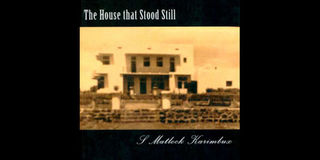Book traces family’s historical link to the growth of Nakuru

The House that Stood Still by Shailla Matlock-Karimbux is a remarkable story about the courage, resilience and determination of a pioneer Asian immigrant and his family to succeed in the face of immense adversity and racial prejudice. PHOTO | NATION
What you need to know:
- But most importantly, the book provides invaluable chronology of the growth of Nakuru town, thanks largely to the great contribution of the Karimbux family.
- The family tragedy coupled with disputes over the control of the late Ibrahim’s vast estate long after the death of the enigmatic patriarch ultimately leads to the inevitable collapse of the Karimbux dynasty.
- The Karimbux were deeply involved in the urbanisation of Nakuru through involvement in provision of social amenities such the construction of a mosque, a Muslim community centre and the first cinema hall (Odeon) in the town that permitted a multi-racial audience.
Book Review: The House that Stood Still
Author: Shailla Matlock-Karimbux
This is a remarkable story about the courage, resilience and determination of a pioneer Asian immigrant and his family to succeed in the face of immense adversity and racial prejudice.
At the onset of colonialism in East Africa, the patriarch of the Karimbux dynasty, Seth Ibrahim, arrives on the Kenyan coast on a small dhow from his native India, penniless and uncertain of what the future holds for him, yet hopeful of finding a better life for his family.
At the time of his death in 1951, more than half a century after his arrival in Kenya, Ibrahim leaves behind a thriving family business and a robust legacy that rightfully holds a special place in the history of the country.
The author, Shailla Matlock-Karimbux, a fourth generation descendant of Ibrahim Karimbux, recounts the early struggles of his immigrant great grandfather in a chronological sequence, from his birthplace in Punjab, India, his arrival in Mombasa in 1895 and his eventual relocation to Nakuru Town, where he settled to establish the family business.
A self-made man of outstanding business acumen, Ibrahim’s well-calculated mentorship of his two sons, Umardin and Yusuf and, later on, his grandsons Mohammed and Yakub over many years is also well-documented in the book.
Although the author proclaims in her blog, karimbuxhousenakurukenya.blogspot.com that “the book has not been written with intention to record a historical account of Kenya, as there is no shortage of literature regarding that”, more than just being about the Karimbux empire, The House that Stood Still is undeniably about the history of Kenya.
The book is also about the people and the diverse cultures of Kenya from the pre-colonial, colonial, post-colonial to the present day.
DYNASTY COLLAPSE
But most importantly, the book provides invaluable chronology of the growth of Nakuru town, thanks largely to the great contribution of the Karimbux family.
Having started off with a modest ox-cart business, the Karimbux family’s enterprise grew over the years to include a provision store, an oatmeal industry and a franchise of a Manchester-manufactured soft drink amongst other ventures. Interestingly, the Karimbux were not all about making capital of their business ventures. The House that Stood Still also brings out family patriarch Ibrahim as a highly virtuous, humble and benevolent man who gave back to the community as much as he received.
The Karimbux were deeply involved in the urbanisation of Nakuru through involvement in provision of social amenities such the construction of a mosque, a Muslim community centre and the first cinema hall (Odeon) in the town that permitted a multi-racial audience.
Sadly, this is also a story about a family afflicted by a “curse” that kept ravenously claiming the apparent male heirs to the Karimbux empire in each successive generation.
The family tragedy coupled with disputes over the control of the late Ibrahim’s vast estate long after the death of the enigmatic patriarch ultimately leads to the inevitable collapse of the Karimbux dynasty.
In the end, what remains of the once prosperous family business, built from scratch by a man who travelled from afar and made his dreams come true, is a massive family house that today stands in solitude. This probably explains the choice of the book’s title, The House that Stood Still.
The author does well to pepper her writings with timeless family photos, pictures of important places, ageless letters, correspondences, documentation and newspaper cuttings from as early as the 1920s, which are in themselves priceless artefacts.
However, a few typos and the choice of a poor quality cover photo are glaring. The author’s biographical data is also inexplicably excluded.




